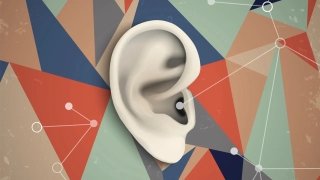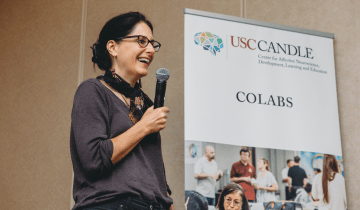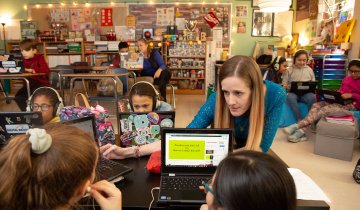A HIGH SCHOOL TEACHER is midway through an American history lesson and senses that her students are losing interest. She hears a brief tone in her earpiece that prompts a quick glance at her computer screen, confirming her suspicions, so she re-engages the class with a reference to the musical “Hamilton.”
A geometry teacher hears an automated voice in his earpiece that tells him his students’ sensor data indicate high anxiety. He might want to slow down or review the last theorem.
The Center for Human-Applied Reasoning and the Internet of Things CHARIOT), a collaboration between the USC Rossier School of Education and USC Viterbi School of Engineering, aims to provide Intuitive and easy-to-understand tools that allow teachers to personalize learning by tracking levels of engagement in the classroom.
“People by the millions are using Fitbits to get feedback on their exercise routines,” says Kenneth Yates, a professor of clinical education at USC Rossier. “We’re creating tools that can provide similar information to instructors about learners, which can then help them pace and personalize their instruction.”
Yates is a co-director of CHARIOT along with Rao Machiraju, an executive-in-residence at USC Rossier, and Bhaskar Krishnamachari, a USC Viterbi professor. Yates brings knowledge of cognitive science and educational psychology, and Krishnamachari specializes in the “Internet of Things” (IOT) — or the network of objects that connect and exchange data. Machiraju adds deep technology, internet expertise and industry experience.
“I remember connecting to the vision Ken and Rao laid out right away,” Krishnamachari says. “This seemed like an amazing opportunity to work with my colleagues at USC Rossier to develop innovative technology that has an impact on the world of education in a really positive, meaningful way.” CHARIOT’s first project is a study of USC undergraduate students using wearable technology developed by partner Smartron to collect sensor data on emotions during a game of Sudoku that varies in difficulty.
The center is conducting a proof-of-concept study by correlating the data from sensors and visual recognition to written surveys in which participants rate their cognitive affective states.
“We’re trying to see if technology can be applied in new ways to give us new insights into the teaching and learning process,” Yates says.
The second phase of the project will be to build the platform to collect multiple samples concurrently from 5-to-10 subjects, and a third phase will deploy the system in a real classroom and provide learning analytics back to the instructor and feedback to the students.
Eventually, CHARIOT plans to partner with K-12 schools to show that the technology works across grade levels to help students reach their optimal learning achievement. It will also be a great boon to those high school history and geometry teachers, who will benefit from having a teaching assistant for every student.





